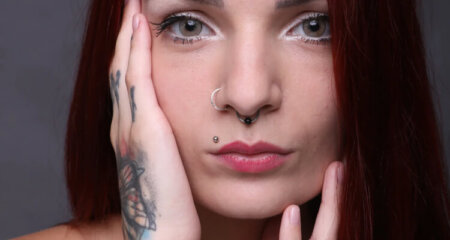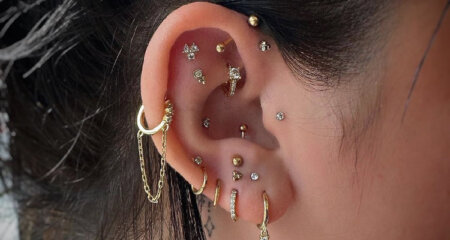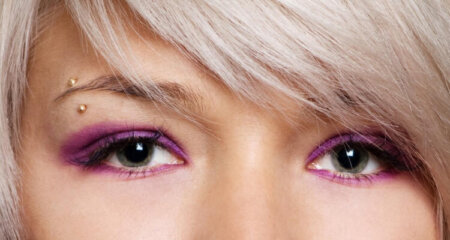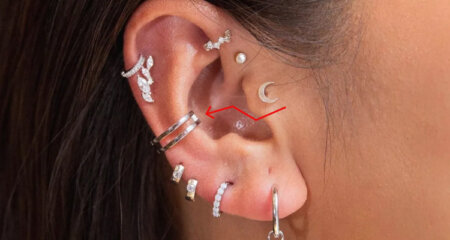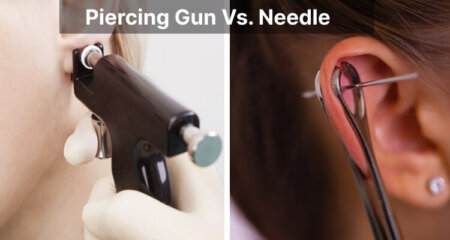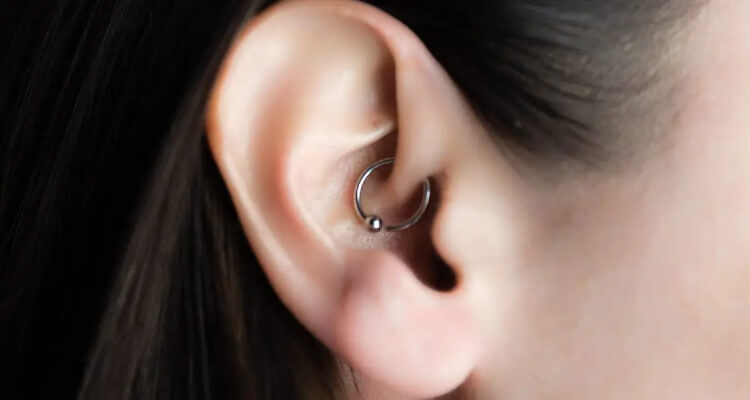
Your Guide to Daith Piercing: Everything You Need to Know
Posted on
If you’re considering a daith piercing, it’s essential to do your research and understand everything involved, from selecting a reputable piercer to properly caring for your piercing during the healing process. With our complete Guide to Daith Piercing, you’ll have all the information you need to make an informed decision and ensure a safe and successful piercing experience.
We’ll walk you through the steps of getting a daith piercing, including what to expect during the procedure, choosing the right jewelry, and aftercare tips. By following our guide, you can feel confident and informed as you embark on this exciting journey of self-expression through body modification.
What is daith piercing?
Daith piercing, also known as dermal piercing or micro dermal piercing, is a form of body modification that involves implanting a small piece of jewelry beneath the skin’s surface.
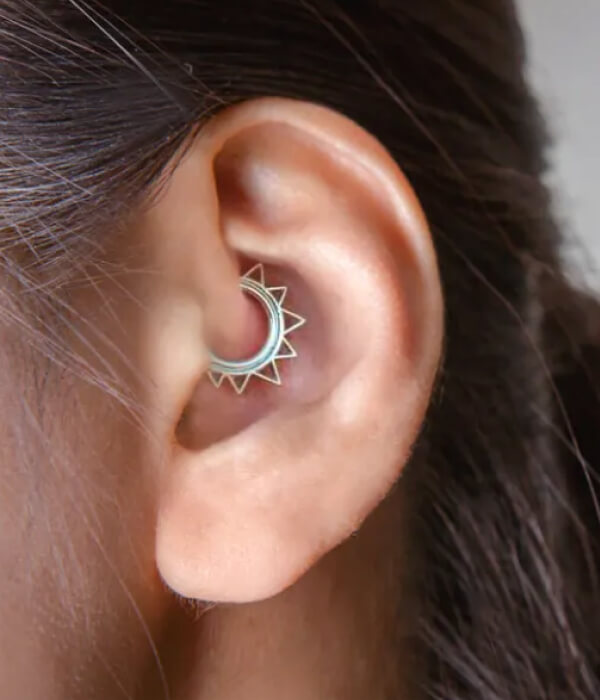
Unlike traditional piercings, which only penetrate the skin and are held in place by jewelry on both sides of the skin, daith piercing involves creating a small pocket or hole in the skin, into which an anchor or plate is inserted.
The jewelry is then attached to the anchor or plate, making it appear to be floating on the skin’s surface.
The jewelry used in daith piercing can come in various styles and materials, including gems, spikes, and barbells made from titanium, stainless steel, or other materials. The placement of the jewelry can also vary, with some people choosing to have them on their ears, wrists, nose, or even on their faces.
The procedure
The procedure for daith piercing involves several steps, beginning with cleaning and sterilizing the area of the skin where the piercing will be placed. The skin is then punctured with a dermal punch or needle to create a pocket for the anchor or plate. The jewelry is then attached to the anchor or plate, completing the piercing process.
While daith piercing can be a visually striking form of body modification, it comes with risks and potential complications. Infections, rejection of the jewelry, and scarring are all possible outcomes of the piercing process. Choosing a reputable and experienced piercer and following proper aftercare instructions is essential to minimize the risk of complications.
Does having daith piercing pain
The pain level of getting a daith piercing can vary depending on the individual’s pain tolerance and the skill level of the piercer.
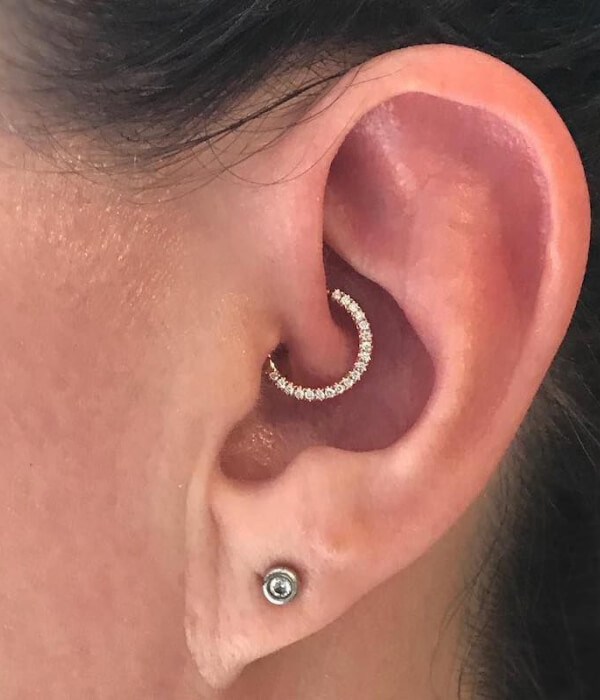
Some individuals report mild distress during the piercing procedure, while a few may feel more severe discomfort. The piercing involves puncturing the innermost fold of cartilage in the ear, which can be a sensitive area for some.
However, the pain is typically short-lived, and most people find that the discomfort subsides quickly after the piercing is completed.
Aftercare instructions, such as keeping the area clean and avoiding sleeping on the piercing, can also help minimize discomfort or pain during the healing process.
What does a daith piercing represent?
The daith piercing has been associated with various symbolic meanings and health benefits, although these associations are primarily subjective and not backed by scientific evidence.
Some people believe that the daith piercing can help relieve migraines or anxiety, as the piercing is said to target a pressure point in the ear connected to these conditions.
Others view the daith piercing as a symbol of inner strength or spiritual awareness, as it is a less common piercing and can be seen as a bold choice of self-expression.
Finally, the importance of a daith piercing is up to the person who decides to have it and can vary based on their beliefs and experiences.
The healing period for daith piercings
The healing period for a daith piercing can change relying on the person’s body and how well they look after the piercing during the healing process. In general, daith piercings take around 3-6 months to heal fully but may take up to a year for some people.
During the healing process, it is essential to keep the area clean, avoid touching the piercing with dirty hands and avoid sleeping on the pierced ear.
It is also necessary to avoid submerging the piercing in water, such as in swimming pools or hot tubs until it has fully healed.
Following proper aftercare instructions can help minimize the risk of infections, scarring, and other complications and support the piercing heal more quickly and smoothly.
How to take care of daith piercing
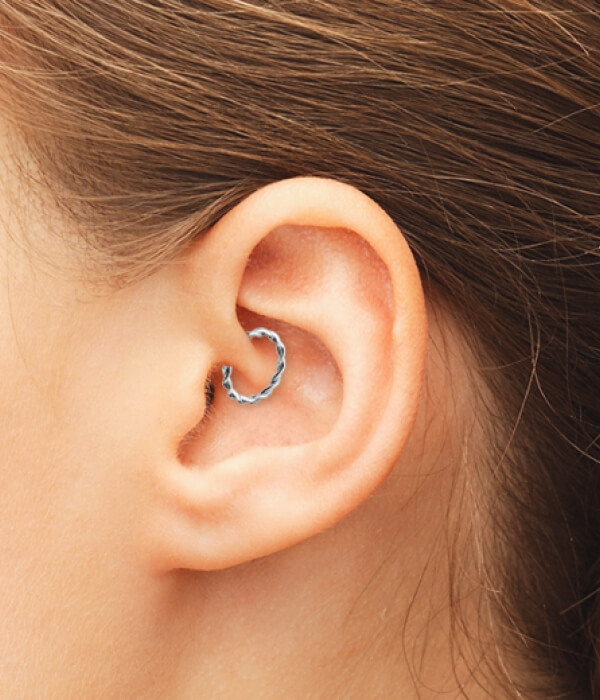
Proper aftercare is essential for promoting the healing of daith piercing and preventing infections or other complications. Here are some tips for taking care of a daith piercing:
- Keep the area clean: Clean the area around the piercing with a saline solution or an antibacterial soap to prevent infection. Avoid using alcohol, hydrogen peroxide, or other harsh chemicals that can irritate the skin.
- Avoid touching the piercing: Refrain from touching the piercing with dirty hands, as this can introduce bacteria into the wound and slow the healing process.
- Don’t remove the jewelry: Do not remove the jewelry before the piercing is fully healed, as this can cause the piercing to close up or become infected.
- Avoid sleeping on the pierced area: Sleep on the opposite side of the piercing to avoid putting pressure on the wound.
- Be cautious with clothing and accessories: Be careful when putting on or removing clothing or accessories that may rub against the piercing, as this can irritate.
- Please stay away from water: Avoid submerging the piercing in water, such as swimming pools or hot tubs, until it has fully healed.
Following these aftercare instructions can help promote the healing of a daith piercing and minimize the risk of complications. It is also essential to consult with a professional piercer for specific aftercare instructions and to address any concerns during the healing process.
Can everyone get a daith piercing
While most people can get a daith piercing, certain factors may make the piercing more difficult or risky. The primary consideration is the ear’s anatomy, as the daith piercing punctures the innermost fold of cartilage in the ear. Individuals with particularly small or thin ear cartilage may not be good candidates for the piercing, as there may need to be more tissue to support the jewelry.
Other factors that may affect a person’s ability to get a daith piercing include their medical histories, such as a history of keloid scarring or chronic health conditions that may impair healing.
It is essential to consult with a professional piercer and discuss any medical concerns before getting a daith piercing to determine whether it is safe and appropriate.
Additionally, some workplaces or schools may have dress codes prohibiting visible piercings, so it is essential to consider any such restrictions before getting the piercing.
Overall, while most people can get a daith piercing, it is necessary to consider individual factors and potential risks before deciding to undergo the piercing.
Does death piercing help with migraine
The relationship between daith piercing and migraines is a topic of debate and has not been scientifically proven. Some people who have received daith piercings report experiencing a reduction in the frequency or severity of their migraines.
It has been suggested that the piercing may target a pressure point in the ear associated with migraines, but this claim is mainly anecdotal and lacks scientific evidence.
While some individuals may find relief from migraines after getting a daith piercing, it is essential to remember that individual results may vary. Piercing is not a guaranteed cure for migraines.
How to take out a daith piercing
Removing a daith piercing should be done only when the piercing has completely healed. Following proper aftercare instructions during the healing process is essential to avoid complications.
To remove the piercing, wash your hands with soap and water and gently twist the jewelry back and forth until it comes out of the piercing.
If the jewelry is difficult to remove, it is essential not to force it, as this can cause damage to the ear. If you are unsure how to remove a daith piercing, it is best to seek assistance from a professional piercer to avoid any potential complications or injury.
How much does a death piercing cost
The cost of a daith piercing can change, counting on many aspects, like the area of the piercing studio, the expertise of the piercer, and the kind of jewelry utilized. On average, a daith piercing can cost anywhere from $30 to $100 or more, with some studios charging additional fees for jewelry or aftercare products.
Choosing a reputable and experienced piercer who uses sterile equipment and practices proper aftercare procedures is essential, even if it means paying a higher price.
Ultimately, the cost of a daith piercing should not be the sole concern when selecting a piercing studio.
Best earring for daith piercing
When choosing the best earring for your daith piercing, there are a few factors to regard. First and foremost, you want to select a high-quality earring made from a hypoallergenic material, such as titanium or surgical stainless steel, to avoid any irritation or allergic reactions.
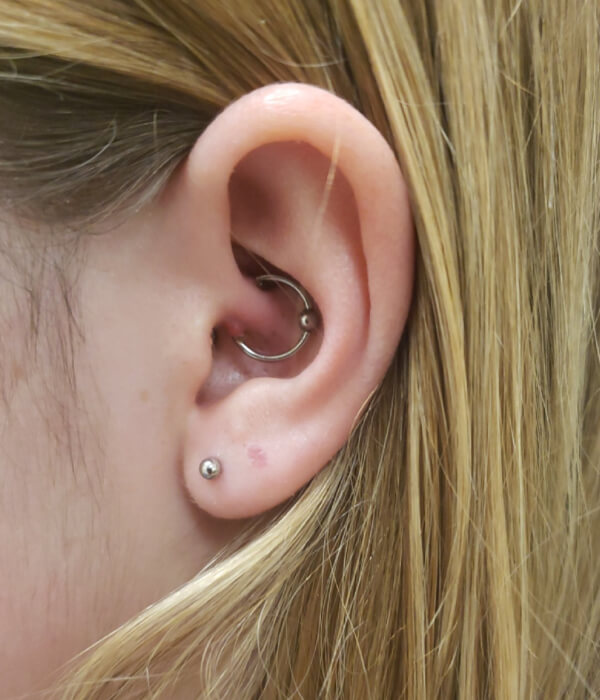
In terms of style, curved barbells or captive bead rings are popular choices for daith piercings. Curved barbells follow the natural curve of the daith and can be more comfortable to wear, while captive bead rings have a more classic look and allow for a bit more movement.
Another aspect to regard is the size and thickness of the earring. Daith piercings are typically done with a larger gauge needle, so you must choose an earring with a matching gauge size.
A more petite diameter earring can be more comfortable, but a larger diameter can make a statement and add a bold look to your ear.
Ultimately, the best earring for your daith piercing will rely on your class and tastes. Just be certain to select a good-quality earring that fits well and is comfortable.
How to choose the jewelry for death piercing
Choosing the right jewelry for your daith piercing is crucial for comfort and healing. It’s important to select high-quality jewelry from hypoallergenic materials, such as titanium or surgical stainless steel, to avoid irritation or allergic reactions. Regarding style, curved barbells and captive bead rings are popular choices for daith piercings.
Select a size and gauge that matches your piercing, as daith piercings are typically done with a larger gauge needle.
Ultimately, the finest jewelry for your Daith piercing will rely on your class and tastes. However, selecting the suitable material, style, and size will ensure a safe and comfortable healing process.
How much does the jewelry cost
The cost of jewelry for a Daith piercing can change relying on the material, type, and quality. On average, high-quality jewelry from hypoallergenic materials like titanium or surgical stainless steel can range from $20 to $50. More expensive options may include gold or diamond jewelry, costing $100 or more.
Further, the price may be more if you opt for customized jewelry or unique designs. Investing in quality jewelry for your Daith piercing is critical to assure sound healing and evade potential problems. Still, ultimately the cost will rely on your individual choices and budget.
Conclusion
getting a Daith piercing can be an exciting and unique way to add personality to your look. However, as with any body modification, it’s essential to research and takes proper care of your piercing to avoid complications.
By following the steps in this complete Daith piercing guide, you can ensure that your piercing is done safely and correctly and that you have the knowledge and tools to care for it during the healing process properly.
Remember to choose a reputable piercer, select high-quality jewelry made from hypoallergenic materials, and keep your piercing clean and dry to avoid infection. With proper care, your Daith piercing can be a stunning and expressive complement to your class for years.

